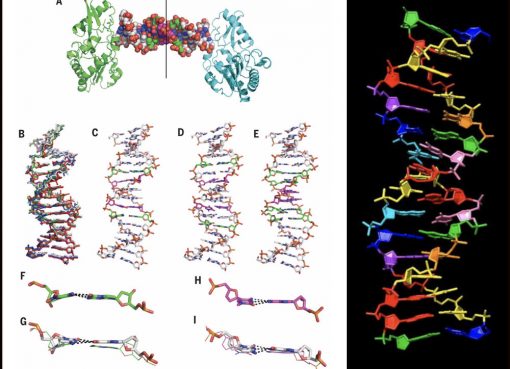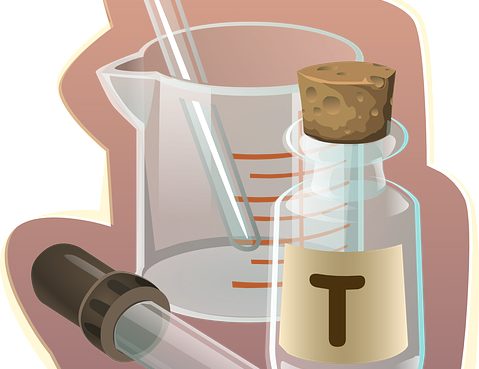Auto-fluorescent agent against drug resistant malarial parasite
Malaria is a mosquito-borne parasitic disease caused by Plasmodium spp. that infects human and many other species. In 2021, about 247 million malaria cases were reported worldwide and there were almost 6,19,000 deaths. Although, there are drugs to cure malaria, the malaria causing parasites are becoming resistant to these drugs and as a result discovery of new drugs is continuously required to fight against drug resistant malarial parasites. In this regard, researchers from Friedrich-Alexander-Universität Erlangen-Nürnberg (FAU) have designed an auto-fluorescent anti-malarial agent by combining two bioactive substances. This novel drug is a hybrid that is formulated by combining artemisinin, an anti-malarial drug with coumarin. This hybrid drug gives fluorescence inside the cells which helps in imaging live cells and shows how the medication works in a precise time sequence. Moreover, this hybrid drug has also been found to be effective against certain drug-resistant Plasmodium falciparum. The findings of this study has laid the foundation to discover more effective agents against drug-resistance in malarial parasites.
Sources:
- Friedrich-Alexander-Universität Erlangen-Nürnberg. “New approaches in the fight against drug resistance in malaria.” ScienceDaily, 20 November 2023. sciencedaily.com/releases/2023/11/231120124152.htm
- Herrmann, L. et al. (2023). Autofluorescent antimalarials by hybridization of artemisinin and coumarin: in vitro/in vivo studies and live-cell imaging. Chemical Science, 14(45): 12941–12952. https://doi.org/10.1039/d3sc03661h
Novel antiviral drug to combat SARS-Coronavirus
The COVID-19 pandemic caused by severe acute respiratory syndrome coronavirus 2 (SARS-CoV-2) put the world in halt for almost 3 years. There were 772,051,988 confirmed cases and 6,985,265 deaths and the count is still on. Although, Remdesivir was identified as one of the potent anti-viral drugs, still it has limitations. Therefore, the hunt is on and multiple institutes from India have identified another potent anti-viral drug that was found to be effective against not only SARS-CoV-2 but also other coronaviruses of SARS group. Based on in-silico screening, SARS-CoV-2-based cell-free assays, SARS-CoV-2-culture system, they have identified 4-(3,4-dihydroxyphenyl)-6,7-dihydroxy-1-isopropyl-1H-benzofuro[3,2-b] pyrazolo[4,3-e]pyridin-3(2H)-one as a promising anti-viral drug that can inhibits Mpro protein of coronaviruses required for virus-replication. Moreover, it was found to be more effective than Remdesivir as it can reduce 97% of viral road. The molecule was designated as STL522228.
Sources:
- Trivedi, A. et al. (2023). Identification of a novel inhibitor of SARS-CoV-2 main protease: an in silico, biochemical, and cell-based approach. The FEBS journal, https://doi.org/10.1111/febs.16947
Picolinic acid, a potent inhibitor of deadly viruses
Picolinic acid (PA) is a natural metabolite produced in the kynurenine pathway during the catabolism of tryptophan. It was documented that PA has anti-viral activity, but it was not shown against many viruses. Therefore, recently a research team from the Indian Institute of Science, Bangalore, India have evaluated its efficacy against various viruses. They observed that PA is effective against enveloped viruses like SARS-CoV-2, influenza A virus, parainfluenza virus herpes simplex virus, and flaviviruses but fails to produce anti-viral activity against non-enveloped viruses. In the study, they observed that PA inhibits virus-cellular membrane fusion mechanism and as a result entry of virus by cellular endocytosis is hampered. Besides the in-vitro assays, in-vivo studies conducted in laboratory animal models have shown that PA has excellent antiviral activity against SARS-CoV-2 and influenza A virus. Thus, it is concluded that PA has a broad-spectrum antiviral activity with promising therapeutic applications against the enveloped viruses.
Sources:
- Narayan, R. et al. (2023). Picolinic acid is a broad-spectrum inhibitor of enveloped virus entry that restricts SARS-CoV-2 and influenza A virus in vivo. Cell reports. Medicine, 4(8): 101127. https://doi.org/10.1016/j.xcrm.2023.101127
- https://indiabioscience.org/news/2023/picolinic-acid-a-potential-therapeutic-against-pandemic-viruses
Time to use first CRISPR therapy
Jennifer Doudna and Emmanuelle Charpentier have invented the CRISPR–Cas9 technology for gene editing almost 11 years ago. However, its clinical use to cure genetic disease was not approved until recently when UK’s regulator has approved the world’s first CRISPR–Cas9 gene editing therapy named ‘Casgevy’ to tackle sickle cell disease and
β-thalassemia. The therapy was developed by Vertex Pharmaceuticals and CRISPR Therapeutics, Switzerland. The endorsement of Casgevy by UK authority has open the window for future approval from US Food and Drug administration by March 2024. Although, Casgevy got approval but still its long-term side-effects needs to be evaluated and in the current form, it is very expensive.
Sources:
- Nature Biotechnology, https://www.nature.com/articles/d41587-023-00016-6




